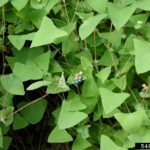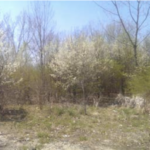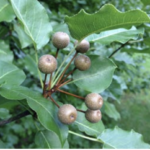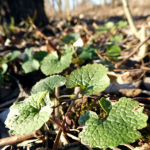 Purdue University - Extension - Forestry and Natural Resources
Purdue University - Extension - Forestry and Natural Resources
Got Nature? Blog
Many of our favorite plants have multiple personalities. There is a good side and a bad side, shown especially when they escape the landscape and spread to our native areas, becoming invasive. When it comes to invasive plants in landscapes, there is good news and bad news. The bad news is that invasive plants are planted intentionally as ornamentals, and several species known to be invasive are readily available for sale from nurseries and garden centers. The good news is that there are many beautiful plants to choose from that are not invasive. Indeed, while many of the most picturesque garden plants are not native to the Midwest, the majority are not invasive. For example, hosta, smoke tree, boxwoods, Japanese tree lilacs, and dwarf shrub junipers are all non-native to the region but are not known to be invasive. However, brad ford pear, red barberry, burning bush and other “go-to” landscape plants are damaging our natural ecosystem by establishing themselves where they really aren’t welcome. These plants should be avoided and even considered for removal and replacement.

Mile-a-minute vine grows more than 25 feet in height in one growing season while covering and smothering forest trees.
Several professional landscape and nursery organizations have taken the charge in eliminating these harmful plants. They believe invasive species adversely affect the integrity of ecosystems and cause both environmental degradation and economic harm. Invasive species – whether they are plants, animals, fungi, or insects – may cause deterioration of native habitats and plant communities as well as damage to designed and managed ecosystems. Because invasives reduce biodiversity and disrupt the healthy structure and function of both native and human ecosystems, planners, contractors, arborists, landscape architects and other green industry professionals should not introduce or support the use of known invasive species. And, where they are already existing, steps should be taken to eradicate them.
Read the publication Commercial Greenhouse and Nursery Production: Alternative Options for Invasive Landscape Plants for more information. Also, here are several online resources for details on invasive pests:
Midwest Invasive Plant Network
Indiana Invasive Species Council
Invasive.org
Indiana Wildlife Federation
To view more Got Nature? posts on Invasive Species:
Woodland Invaders
What are invasive species and why should I care?
Resources
Indiana DNR Division of Forestry
Report Invasive, Purdue Extension
The GLEDN Phone App – Great Lakes Early Detection Network
EDDMaps – Early Detection and Distribution Mapping System (Report Invasives)
Cooperative Invasive Species Management Area (CISMA)
Indiana Department of Natural Resources: Invasive Species
Indiana Invasive Species Council
Commercial Greenhouse and Nursery Production: Alternative Options for Invasive Landscape Plants, The Education Store, Purdue Extension’s resource center
What Nurseries Need to Know About the Invasive Species Regulation, The Education Store, Purdue Extension’s resource center
Invasive plants: impact on environment and people, The Education Store, Purdue Extension’s resource center
Lindsey Purcell, Chapter Executive Director
Indiana Arborist Association

Recent Posts
- New Indiana Woodland Steward Newsletter, Stumpage Timber Price Report
Posted: May 3, 2025 in Forestry, Timber Marketing, Woodlands - ID That Tree: Black Raspberry
Posted: May 2, 2025 in Forestry, Urban Forestry, Woodlands - Publication – Goldenrod Control
Posted: April 30, 2025 in Forestry, Invasive Plant Species, Wildlife - White-tailed Deer Impact on Indiana Woodlands, Hoosier Ag Today
Posted: April 29, 2025 in Wildlife, Woodlands - Top 10 Spring Flowering Shrubs, Purdue Landscape Report
Posted: April 28, 2025 in Gardening, Plants, Urban Forestry - HTIRC Continues to Protect Our Hardwood Forests
Posted: April 18, 2025 in Forestry, Timber Marketing, Woodlands - Tips to Manage Storm-Damaged Trees, Purdue Landscape Report
Posted: April 17, 2025 in Forests and Street Trees, How To, Urban Forestry - Liz Jackson Receives IHLA’s President’s Award, Featured in ANR Newsletter
Posted: in Forestry, Timber Marketing, Wildlife, Wood Products/Manufacturing, Woodlands - A Woodland Management Moment: Bottomland Forests
Posted: in Forests and Street Trees, Urban Forestry, Wildlife, Woodland Management Moment, Woodlands - When is the Peak Migration For Hummingbirds and How Can You Attract Them?
Posted: April 4, 2025 in How To, Wildlife
Archives
Categories
- Alert
- Aquaculture/Fish
- Aquatic/Aquaculture Resources
- Ask the Expert
- Christmas Trees
- Community Development
- Disease
- Drought
- Forestry
- Forests and Street Trees
- Gardening
- Got Nature for Kids
- Great Lakes
- How To
- Invasive Animal Species
- Invasive Insects
- Invasive Plant Species
- Land Use
- Natural Resource Planning
- Nature of Teaching
- Plants
- Podcasts
- Ponds
- Publication
- Safety
- Spiders
- Timber Marketing
- Uncategorized
- Urban Forestry
- Webinar
- Wildlife
- Wood Products/Manufacturing
- Woodland Management Moment
- Woodlands


